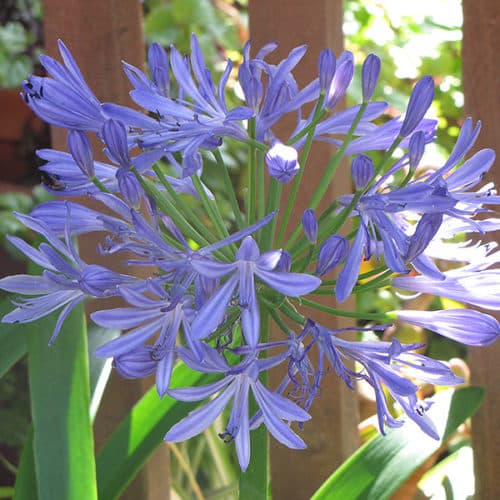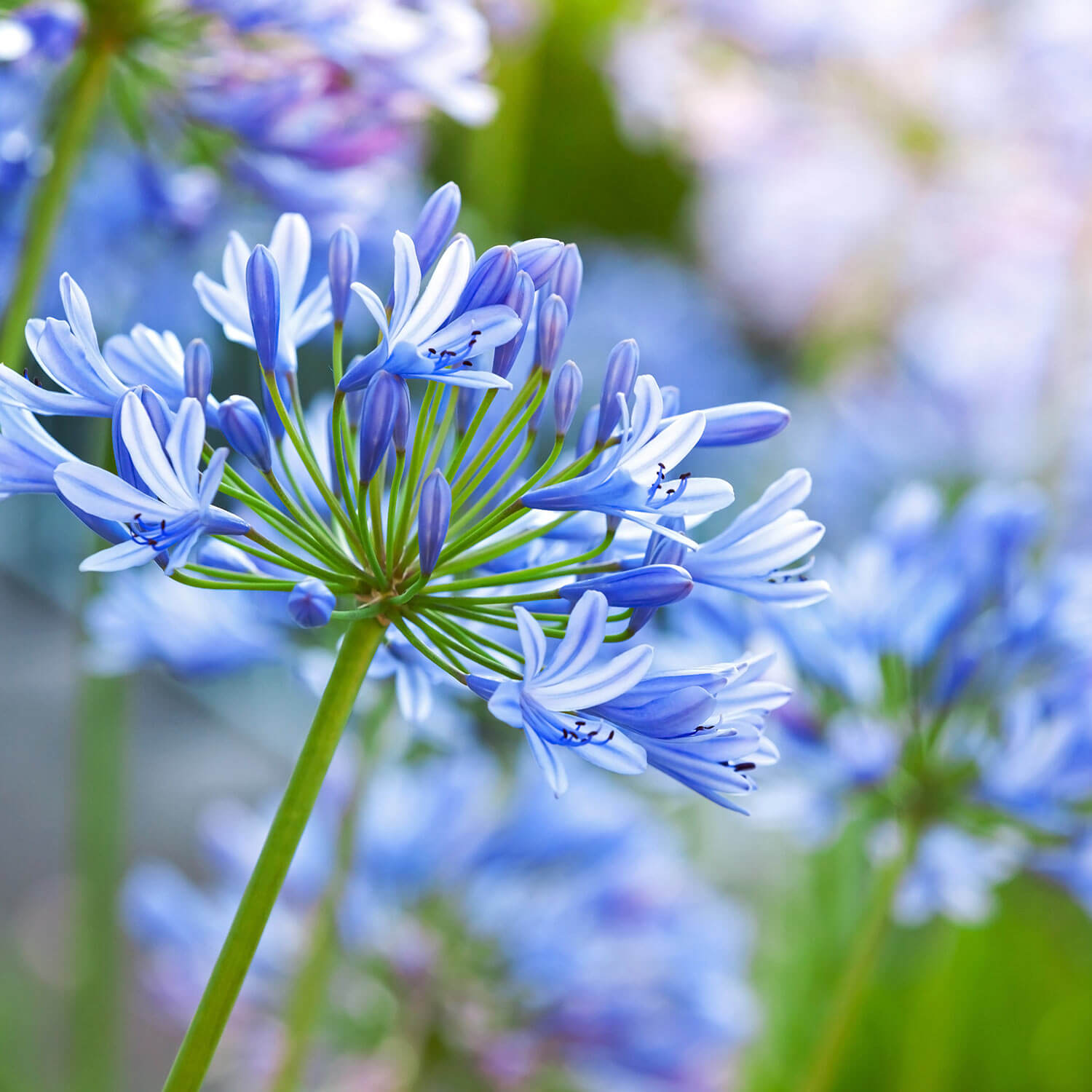Agapanthus Treatment Tips for Lush and Vibrant Flowers
Letting Loose the Secret to Successful Agapanthus Growing: Advice for a Flourishing Garden
In the realm of horticulture, cultivating agapanthus effectively requires a strategic method that includes numerous aspects of plant care. By recognizing the subtleties of agapanthus growing, one can create an atmosphere where these plants flourish and flower perfectly.
Planting Agapanthus: Finest Practices
When growing Agapanthus, correct dirt prep work is essential for making sure successful growth and advancement of these lovely blossoms. Agapanthus, generally called Lily of the Nile or African lily, thrives in well-draining dirt with a slightly acidic to neutral pH level - Agapanthus. Prior to growing, it is critical to amend hefty clay dirts with raw material such as compost or peat moss to enhance drain and provide important nutrients for the plants
To grow Agapanthus, choose a location that gets complete sunshine to partial color, as this will promote healthy development and abundant blooming. Dig an opening two times the size of the plant's root ball and place the Agapanthus at the exact same depth it was previously growing. Gently backfill the hole with soil, pushing down firmly to remove any type of air pockets around the origins.
Water the newly grown Agapanthus completely and remain to keep the soil uniformly wet, specifically throughout the plant's energetic growing season. Agapanthus. Using a well balanced fertilizer once a month can better support the plant's growth and blooming. By complying with these ideal methods for growing Agapanthus, you can develop a magnificent display of these fascinating blossoms in your yard
Perfect Dirt Issues for Agapanthus
For optimum growth and growing success of Agapanthus plants, making sure the soil conditions are suitable is critical. Agapanthus favors dirt that is rich in nutrients, so incorporating a well balanced plant food during the expanding season can advertise healthy and balanced growth and lively flowers.

Watering and Fertilizing Tips
To make sure healthy growth and vibrant blossoms, correct watering and feeding methods are vital for successful Agapanthus growing. Agapanthus plants benefit from routine watering, specifically throughout the growing season.
When it comes to feeding Agapanthus, a balanced fertilizer with equivalent components nitrogen, phosphorus, and potassium can be used in the springtime to promote healthy development and blooming. Slow-release fertilizers are optimal for offering nutrients progressively over an extensive period. Prevent over-fertilizing, as this can result in excessive foliage development at the expenditure of flowers.
Furthermore, including raw material like compost into the soil can boost nutrient degrees and enhance dirt structure, aiding in the overall wellness of the Agapanthus plants. By adhering to these watering and fertilizing suggestions, gardeners can ensure their Agapanthus plants flourish and create magnificent screens of blossoms.
Trimming and Deadheading Methods
Correct pruning and deadheading methods play a critical function in maintaining the health and aesthetics of Agapanthus plants, complementing the important methods of watering and feeding for effective growing. Trimming Agapanthus entails removing invested flower heads, dead or yellowing fallen leaves, and total shaping of the plant to promote far better growth. Deadheading, the procedure of getting rid of discolored flowers, not just enhances the plant's look but also urges additional flowering.
When deadheading Agapanthus, it is a good idea to trim off the blossom stem at the base utilizing sharp, clean shears. This process reroutes the plant's power from seed manufacturing back into origin and foliage development, promoting a much healthier and more robust plant. Regular deadheading can prolong the blooming duration of Agapanthus and protect against self-seeding, which can bring about congestion.
In regards to pruning, Agapanthus usually take advantage of a light trim after flowering to clean up the plant and motivate fresh growth. Reducing back the spent blossom stems and getting rid of any kind of damaged or dead vegetation aids preserve the website link plant's vigor and overall look. Nonetheless, it is important to prevent reducing into the crown of the plant, as this can compromise its health and wellness.

Protecting Agapanthus From Pests and Diseases
Carrying out efficient pest and disease monitoring approaches is vital to safeguarding the wellness and vitality of Agapanthus plants in growing. Agapanthus are usually durable plants, but they can still come down with various parasites and diseases if not correctly looked after. One common insect that impacts my explanation Agapanthus is the Agapanthus borer, a caterpillar that passages right into the plant, triggering damages to the leaves and blossoms. To stop infestations, routine evaluation of the plants is necessary. If borers are spotted, they can be by hand eliminated, or insecticidal soap can be utilized as a control procedure.
In enhancement to bugs, Agapanthus are at risk to conditions such as root rot and fungal leaf spots. These concerns can typically be avoided by ensuring appropriate water drainage and preventing overwatering. If indications of condition show up, influenced parts of the plant ought to be without delay removed to prevent further spread. Fungicides may likewise be utilized as a treatment step, adhering to the supplier's directions very carefully. By staying attentive and addressing bug and illness problems without delay, garden enthusiasts can aid their Agapanthus flourish and flourish.

Verdict
Finally, effective growing of agapanthus needs correct growing strategies, excellent soil conditions, ample watering and feeding, routine pruning and deadheading, and defense from conditions and insects. By following these techniques and pointers, gardeners can make certain a growing yard filled with attractive agapanthus flowers. Agapanthus. Keep in mind to keep consistent treatment and focus to information to advertise try this website the wellness and longevity of these stunning plants
When planting Agapanthus, appropriate dirt preparation is crucial for ensuring effective development and advancement of these gorgeous flowers.Water the freshly planted Agapanthus completely and proceed to maintain the dirt evenly wet, particularly throughout the plant's active growing season.For optimum growth and growing success of Agapanthus plants, making sure the soil problems are optimal is crucial. When planting or hair transplanting Agapanthus, ensure the dirt is well-prepared to supply the required structure for the plants to develop themselves efficiently. One usual bug that influences Agapanthus is the Agapanthus borer, a caterpillar that tunnels right into the plant, creating damage to the leaves and flowers.